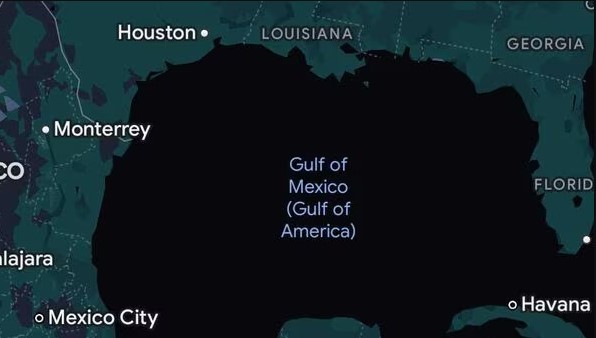National Weather Service Updates Maps to Reflect Gulf of America Name Change
National Weather Service Updates Maps to Reflect Gulf of America Name Change
Gulf of America – On January 6, 2025, President Donald Trump, after being certified as the winner of the 2024 presidential election by Congress, announced that he would follow through on a suggestion made during his campaign: renaming the Gulf of Mexico. The President’s push to rename this body of water was part of his broader initiative to honor American greatness, which he outlined in an executive order titled “Restoring Names That Honor American Greatness.” The Gulf of Mexico was formally renamed the Gulf of America as a result.
The change was quickly implemented, and by February 13, 2025, the National Weather Service (NWS) had begun updating its maps to reflect the new name. The Gulf of America now appears on storm tracking maps from the National Hurricane Center, a widely recognized resource for storm tracking, especially in areas like Florida, where the Gulf is a key geographic feature. The Gulf had previously been known by its historic name, which dates back over 480 years, originating from the Spanish term “Seno de Mejicano” or the Mexican Gulf.
This change was not just a symbolic gesture; it marked a shift in how the United States viewed its natural landmarks and their association with national identity. The President’s executive order mandated federal agencies to adopt the new name, and several agencies, including the U.S. Geological Survey (USGS), quickly followed suit. In a statement released on February 14, 2025, the USGS acknowledged that the name change required a collaborative effort across various departments and agencies, highlighting the complexity of renaming a geographic feature of such significance.
The impact of the name change has been felt far beyond government agencies. Major technology companies, such as Google and Apple, swiftly updated their digital maps to display the Gulf of America. This move demonstrated the speed with which commercial applications can respond to changes in geographical nomenclature. AccuWeather, a private weather forecasting company, also began rolling out the changes to its maps, though it noted that its updates were still in progress.
More Information on Topic – National Weather Service Updates Maps to Reflect Gulf of America Name Change
The official announcement came alongside another milestone: February 9, 2025, was designated as the first-ever Gulf of America Day. During this event, Air Force One flew over the newly renamed Gulf, marking the occasion as part of the administration’s efforts to solidify the name change in the public consciousness.
However, the renaming has sparked controversy. Mexican President Claudia Sheinbaum voiced strong objections, arguing that the new name erases the historical connection between Mexico and the Gulf. The Mexican government has even threatened to sue Google over its decision to adopt the new name on its mapping services. This conflict has heightened diplomatic tensions between the U.S. and Mexico, with the Mexican government questioning the implications of the name change on regional relations.
In the U.S., the Associated Press (AP) became embroiled in the debate when it continued to use the Gulf of Mexico in its reporting, even while acknowledging President Trump’s decision to rename it. The AP’s stance led to its being barred from White House events. The AP explained that its decision was based on its global audience, stating that it was crucial for place names to remain recognizable and consistent for its international readers.
The renaming of the Gulf to the Gulf of America is a reflection of President Trump’s broader agenda to reshape national symbols and landmarks to reflect his vision of American identity. This initiative, which also includes efforts to rebrand other geographical features and institutions, has garnered both praise and criticism. Supporters argue that the name change reflects a necessary reclamation of American heritage, while opponents contend that it disregards historical and cultural connections.
Gulf of America
The debate surrounding the Gulf’s renaming underscores the ongoing tension between national identity, historical preservation, and international relations. As the Gulf of America begins to appear on more maps and in more media outlets, the global community watches closely to see how this name change will impact diplomatic and cultural ties between the United States and its neighbors, particularly Mexico. While the renaming effort is in its early stages, it is already clear that it will remain a point of contention for years to come.
Also Read – Everything We Know About the Revamped ‘Avengers: Doomsday’
